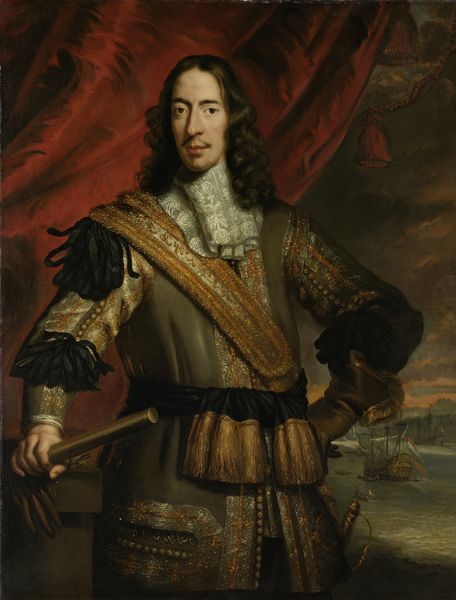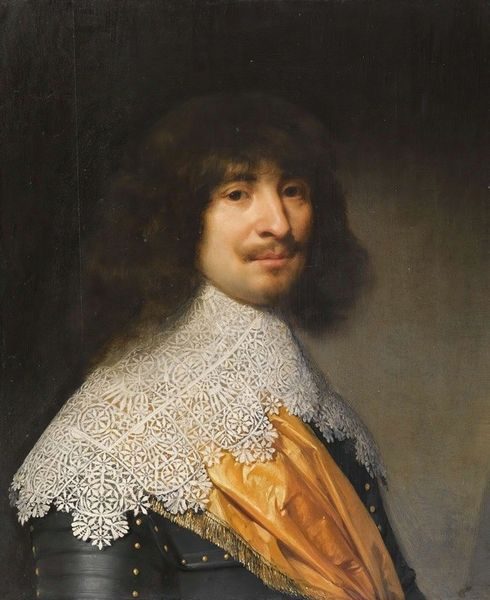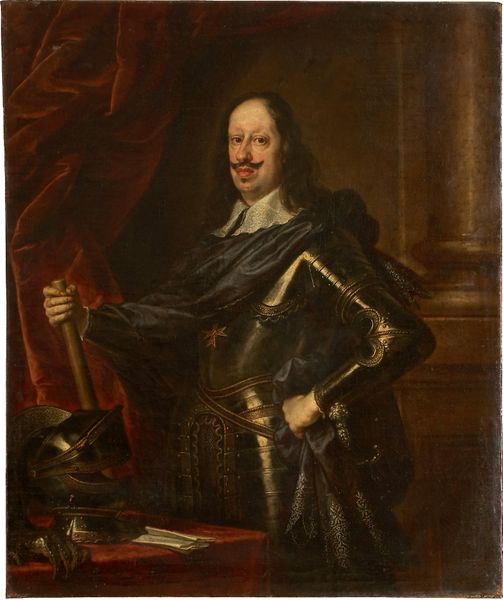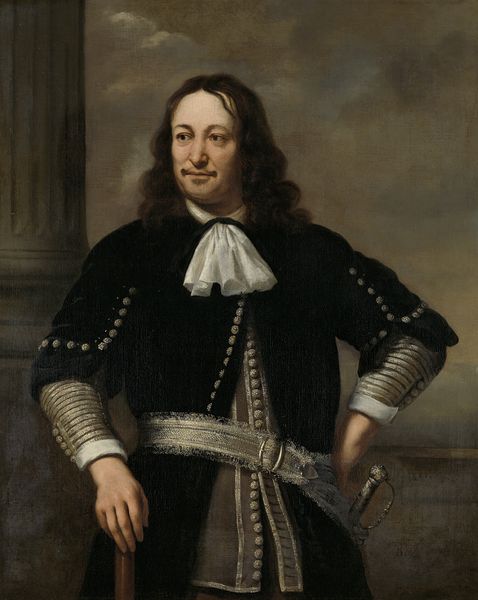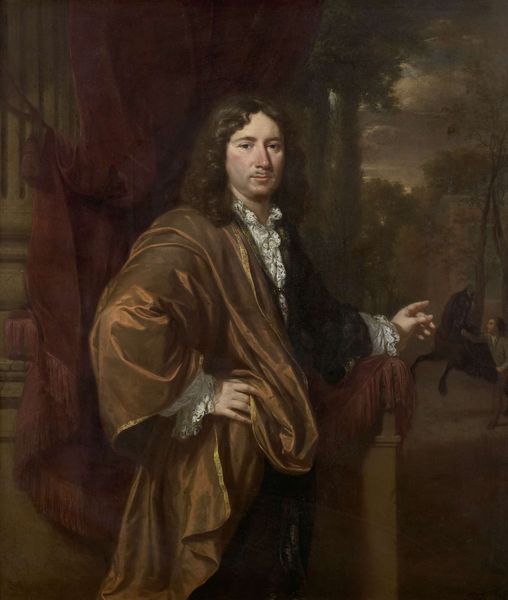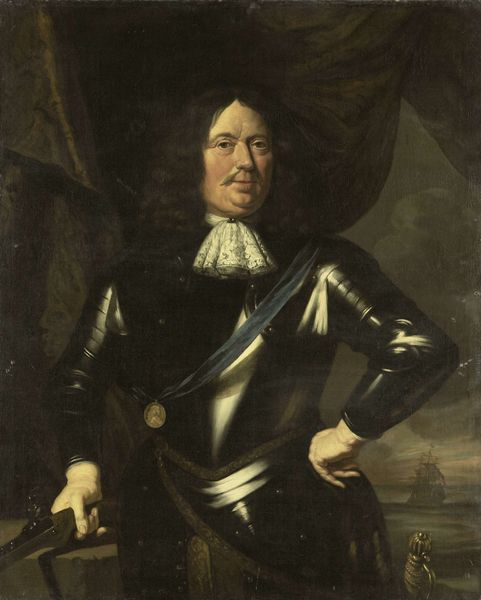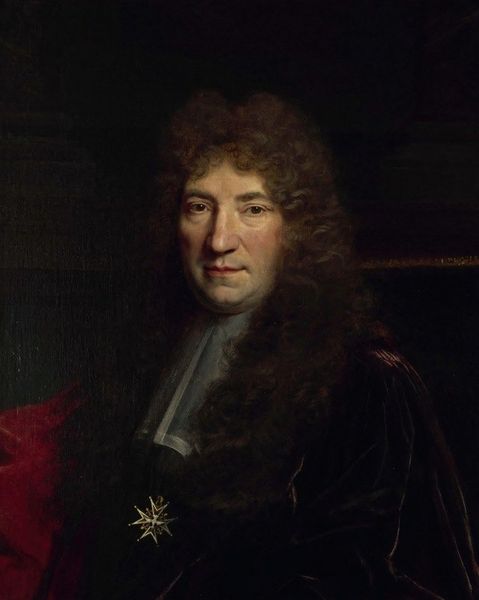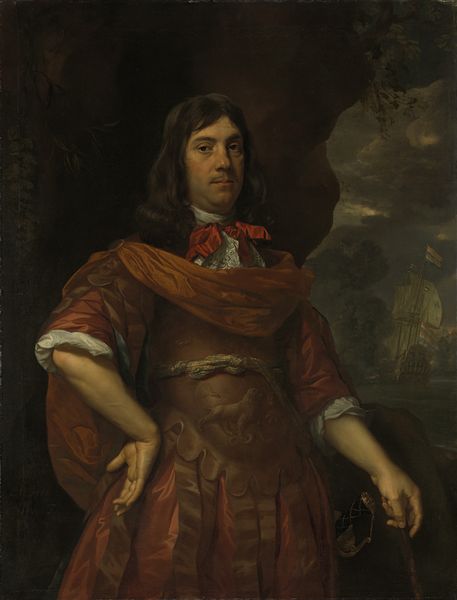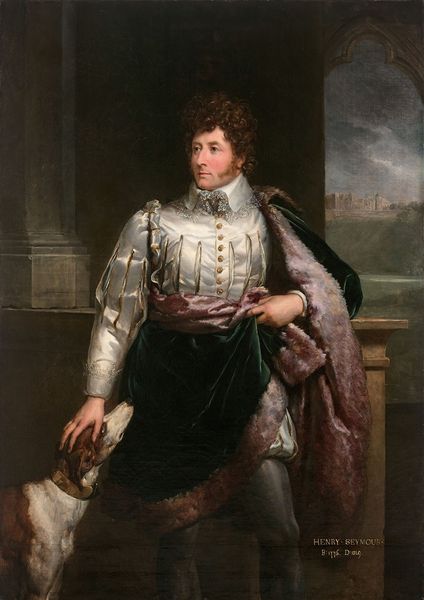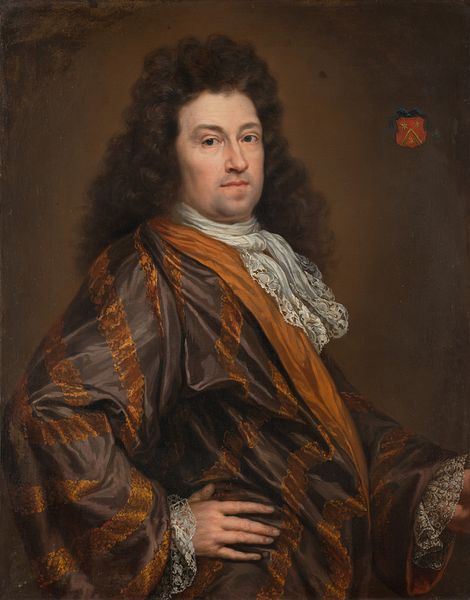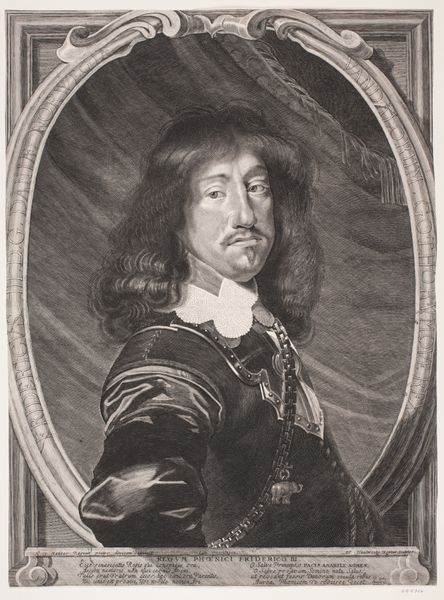
Portrait of Mattheus van den Broucke (1620-1685). Councillor of the Indies 1670 - 1678
0:00
0:00
painting, oil-paint
#
portrait
#
baroque
#
dutch-golden-age
#
painting
#
oil-paint
#
landscape
#
group-portraits
#
cityscape
#
history-painting
#
realism
Dimensions: height 142 cm, width 111 cm, depth 10.5 cm
Copyright: Rijks Museum: Open Domain
Editor: Here we have Samuel van Hoogstraten’s "Portrait of Mattheus van den Broucke," painted between 1670 and 1678. The portrait, made with oil paints, is incredibly striking, particularly the sitter’s controlled expression against that turbulent seascape. How do you see this piece speaking to its time? Curator: Well, first, notice how van den Broucke is positioned—he stands before a scene that’s both chaotic and beautiful, a testament to Dutch maritime power but also suggestive of colonial exploits. His portrait isn’t just about individual identity, but about power and its inherent tensions, set during the Dutch Golden Age, yes, but an age built upon what, and for whom? Editor: So, you're suggesting the painting's grandeur hides a darker side to the narrative? Curator: Precisely. Van den Broucke was a Councillor of the Indies, deeply implicated in the VOC—the Dutch East India Company. Can we divorce the aesthetics from the realities of that economic and political system that depended on resource extraction, slavery and oppression in colonized lands? Consider how his wealth and status, clearly displayed here, are directly connected to that global context. Editor: I hadn't thought about it in those terms. I was just seeing a powerful man. Now I wonder if the seascape background is intentionally turbulent. Curator: What do you think that might signify? Could it hint at the inherent instability and violence baked into this prosperity? Van Hoogstraten offers not just a portrait, but a complex visual statement about a man and the system he represents. What is celebrated on the surface contrasts dramatically with what enabled its glory. Editor: That makes me rethink the Dutch Golden Age entirely. Thank you for highlighting those connections; it completely transforms how I perceive this portrait. Curator: And hopefully, it encourages a broader dialogue about art's relationship to history and the ethics of representation.
Comments
No comments
Be the first to comment and join the conversation on the ultimate creative platform.
